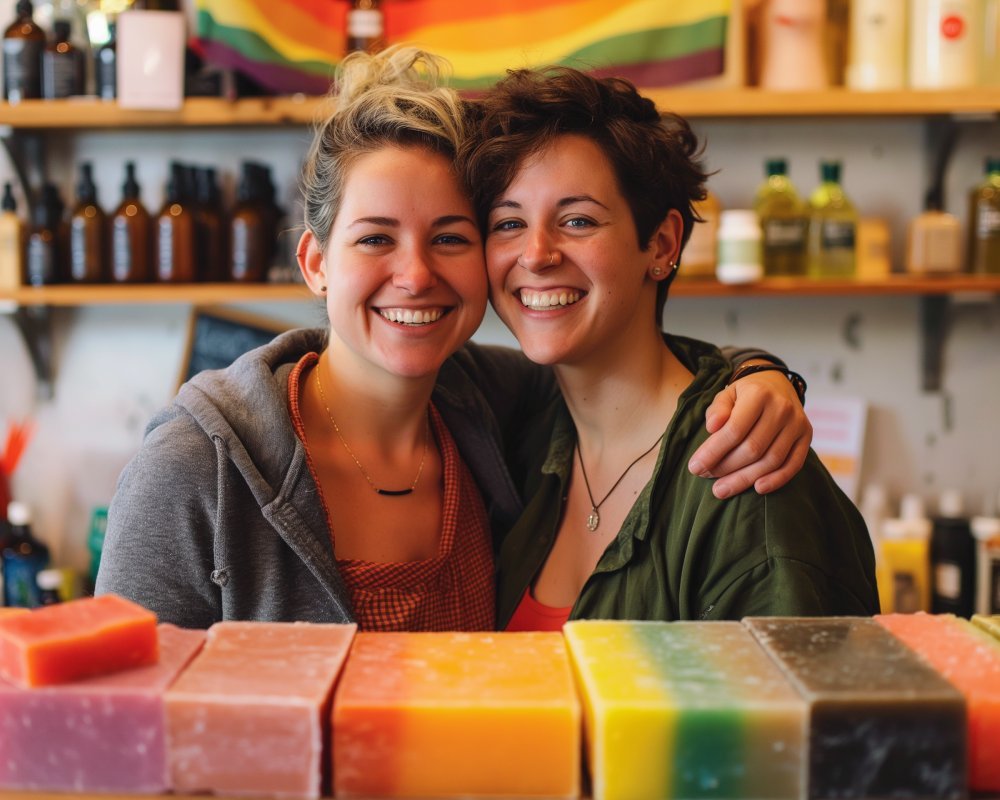
Challenges and Opportunities of Lesbian-Targeted Advertising in a Changing Cultural Landscape
As the cultural landscape evolves and becomes more inclusive, the advertising industry is faced with both challenges and opportunities when it comes to targeting the lesbian community. Lesbian-targeted advertising has the potential to reach a significant and influential demographic, but it also requires a nuanced and thoughtful approach to resonate with this audience authentically. In this blog post, we will explore the challenges and opportunities of lesbian-targeted advertising in today’s changing cultural landscape.
The Power of Lesbian-Targeted Advertising
Lesbian-targeted advertising has the power to reach a diverse and engaged audience. By specifically targeting lesbians in marketing campaigns, brands can connect with a community that is often underserved and underrepresented in mainstream media. This targeted approach allows brands to create content that speaks directly to the unique experiences and preferences of lesbians, fostering a sense of inclusivity and representation.
Furthermore, lesbian consumers are known for their strong purchasing power and brand loyalty. Studies have shown that lesbians are more likely to support businesses that align with their values and demonstrate a commitment to LGBTQ+ inclusivity. By engaging with lesbian consumers through targeted advertising, brands have the opportunity to build lasting relationships and drive sales within this valuable demographic.
Authenticity in Lesbian-Targeted Advertising
One of the key challenges of lesbian-targeted advertising lies in the need for authenticity. In order to resonate with lesbian consumers, brands must ensure that their marketing efforts are genuine, respectful, and reflective of the diversity within the lesbian community. This requires a deep understanding of lesbian culture, values, and lived experiences, as well as a commitment to representing lesbians in a positive and empowering light.
Additionally, brands must be mindful of avoiding stereotypes and tokenism in their lesbian-targeted advertising. Lesbians are a diverse group of individuals with unique identities and interests, and it is important for brands to portray this diversity accurately in their marketing efforts. By taking the time to listen to and learn from lesbian consumers, brands can create advertising that is truly inclusive and resonant.

Building Visibility and Community Engagement
One of the key benefits of lesbian-targeted advertising is the opportunity to build visibility and engagement within the lesbian community. By featuring lesbian individuals and couples in advertising campaigns, brands can help to normalize LGBTQ+ representation and celebrate the diversity of lesbian identities. This visibility not only benefits the brand by connecting with a valuable demographic but also serves to uplift and empower the lesbian community as a whole.
Additionally, lesbian-targeted advertising can create opportunities for community engagement and activism. By partnering with LGBTQ+ organizations and advocacy groups, brands can demonstrate their commitment to supporting the lesbian community and promoting social change. This type of partnership can help to build trust and loyalty among lesbian consumers while also making a positive impact on society as a whole.
Navigating the Challenges of Lesbian-Targeted Advertising
Despite the benefits of lesbian-targeted advertising, there are also challenges that brands must navigate in order to be successful. One of the primary challenges is the risk of backlash from conservative or homophobic audiences. In a changing cultural landscape where LGBTQ+ rights are still a contentious issue, brands may face pushback from individuals who are opposed to inclusive advertising. This requires brands to carefully consider the potential risks and implications of their marketing strategies.
Another challenge of lesbian-targeted advertising is the need for nuanced and authentic representation. In order to connect with lesbian consumers, brands must go beyond surface-level diversity and inclusivity and truly understand the lived experiences and identities of lesbians. This may require investing in research, consultation with LGBTQ+ experts, and ongoing dialogue with the lesbian community to ensure that advertising efforts are respectful and meaningful.
Advertisement · Scroll to continue
Recommended
Embracing the Opportunities of Lesbian-Targeted Advertising
Despite the challenges, there are also numerous opportunities for brands to thrive with lesbian-targeted advertising. By authentically engaging with the lesbian community, brands can build loyalty, drive sales, and make a positive social impact. Lesbian consumers are a valuable and influential demographic, and by prioritizing their needs and preferences, brands have the opportunity to create meaningful connections and drive meaningful change.
Furthermore, lesbian-targeted advertising can help brands to differentiate themselves in a crowded marketplace. By actively marketing to lesbians, brands can stand out from competitors and position themselves as leaders in LGBTQ+ inclusivity. This can help to attract new customers, strengthen brand loyalty, and foster a reputation as a socially responsible and forward-thinking business.
In conclusion, the challenges and opportunities of lesbian-targeted advertising in a changing cultural landscape are complex and nuanced. By approaching lesbian-targeted advertising with authenticity, inclusivity, and empathy, brands have the opportunity to connect with the lesbian community in a meaningful and impactful way. By prioritizing diversity, representation, and community engagement, brands can build lasting relationships with lesbian consumers and contribute to a more inclusive and equitable society. Embracing the challenges and opportunities of lesbian-targeted advertising is not only a smart business strategy but also a powerful way to support LGBTQ+ visibility, representation, and empowerment in the advertising industry and beyond.
Advertisement · Scroll to continue

More Recommended
How Do You Support a Friend Who Just Came Out as Gay?
How Do You Support a Friend Who Just Came Out as Gay? – Navigating the [...]
Does Home Depot support DEI?
Does Home Depot support DEI? – Home Depot, a major player in the home improvement [...]
Celebrate Diversity: How to Cultivate a Welcoming Brand for Lesbians
Celebrate Diversity: How to Cultivate a Welcoming Brand for Lesbians As we navigate the ever-changing [...]
Inclusivity in Action: Supporting Lesbian-Owned Businesses in the Market
The Importance of Supporting Lesbian-Owned Businesses in the Market Lesbian-owned businesses play a crucial role [...]
Pride in Business: The Rise of LGBT-Owned Companies
Pride in Business: The Rise of LGBT-Owned Companies – Pride in Business: The Rise of [...]
First-Time Gay Cruise Tips: A Beginner’s Guide
First-Time Gay Cruise Tips: A Beginner’s Guide – Embarking on your first gay cruise can [...]
Pride and Profit: How Brands are Embracing LGBTQ+ Marketing to Drive Sales
Pride and Profit: How Brands are Embracing LGBTQ+ Marketing to Drive Sales – At Gay [...]
The Future of Advertising: How Gay-Owned Companies Are Leading the Way in Diversity Marketing
The Future of Advertising: How Gay-Owned Companies Are Leading the Way in Diversity Marketing – [...]
Breaking down the Myths: How Target Marketing to the Gay Community is Shaping the Future of Advertising
Breaking down the Myths: How Target Marketing to the Gay Community is Shaping the Future [...]